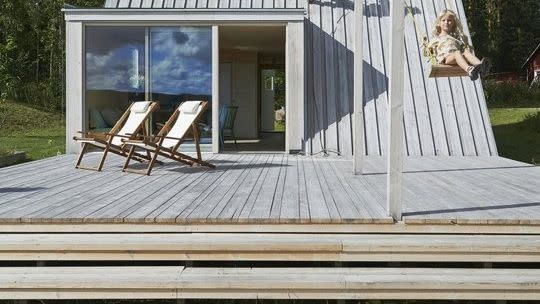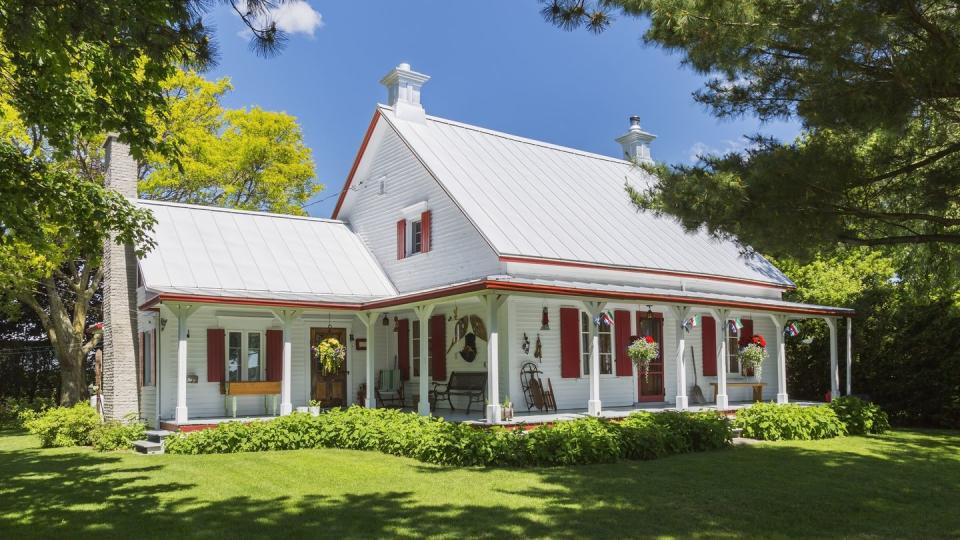Does Painting Your Roof White Really Slash Your Energy Bill?

From planting leafy trees to provide shade around your home to regularly cleaning your air filters to help them operate more efficiently, there are several tips and tricks to help you cool your home that don’t involve cranking up your AC and letting it run all the way through early fall—increasing your energy bill, carbon footprint, and the chance of a power outage. The latest idea making the rounds? Painting your roof white. But does it really cut down on your energy costs during heat waves?
What Is a "Cool Roof"
Just like wearing light-colored clothes can help keep you cool, white or light-colored roofing can reflect sunlight and absorb less solar energy, ultimately helping you cut down on your air conditioning costs, according to the U.S. Department of Energy. Conventional roofs, according to the DOE, can heat up to 150 degrees Fahrenheit on a sunny afternoon, but a "cool roof" could bring down the temps by as much as 50 degrees.
What's more: Researchers at Purdue University, in an effort to curb global warming, have formulated the world's whitest white paint, which they say can reflect 98.1% of solar heat away from its surface so you don’t have to keep your AC running.
At SXSW earlier this year, the researchers showed that a model barn painted with Purdue's white paint held cooler internal temps by 8 to 10 degrees Fahrenheit compared to one painted with commercial white paint. The Purdue paint is still in the patent process, but fingers crossed it will become available to consumers—stat!

Here's what else to know if you're considering painting your roof white.
Location Matters
First things first: If you live in a neighborhood with a Homeowners Association, you might need to check with the board before you make any roofing changes.
"Many neighborhoods and communities have homeowners associations that dictate certain architectural guidelines, including roofing materials and colors," points out Boyd Rudy, an associate broker with MiRelo Team powered by KW Professionals in Brighton, Michigan.
If you're custom-building a home or replacing a roof, there are white and light-colored shingles that exist, but they tend to be most popular in hot climates where homeowners will benefit the most from energy savings.
Those in colder climates may actually prefer black and gray roofing shingles because they can absorb solar radiation, helping to warm the roof and reduce the demand for heating during cold months, explains Constantine Anest, owner of Denver, Colorado-based Ethos Roofing and Restoration.
If reducing your energy bills are your main objective, and you live in an area that gets blustery winters, a cool roof could actually increase your heating costs and cost you more on an annual basis.
Say N.O. to D.I.Y.
If you do decide a white roof is the way to go, painting it is a job best left to the professionals. Safety reasons aside, pressure washing and priming are important steps before painting, and the pros have specialized equipment, explains Anthony Lara, President and Owner of Picazzo Painting, a commercial and residential painting and home improvement company in Miami.
The cost of hiring a professional to paint shingles can vary depending on factors such as the size of the roof and what type of paint you use, Anest explains. On average, he says, homeowners can expect to pay between $1,500 and $3,000 for a professional to paint shingles.
Painting your roof isn't a one-and-done project, though. In order to maintain reflectivity, paint may need reapplication every three to five years depending on climate and sun exposure, says Bob Thomas, a house painter with Hearth and Petals.
Consider the Raw Materials
Some roofs will be easier to paint than others. Smooth asphalt shingles tend to hold paint better than textured wood shakes which require more prep and primer, says Thomas. Metal roofs, once relegated to industrial buildings, are becoming more popular for residential neighborhoods. They can be painted, but any rust or flaking paint should be removed with a wire brush or sandpaper, and a coat of metal primer applied before painting, says Nick Lopez, Founder of LIME Painting, which has locations throughout the United States.
Slate and clay tiles are popular choices for roofs due to their durability and aesthetic appeal, but painting them may be more trouble than it's worth. "They are porous, which means they absorb moisture, and this can cause paint to peel or crack over time," Lopez says. Also, the glaze on terracotta tiles make it difficult for paint to adhere to the surface, so he doesn’t recommend giving them a paint job.
The bottom line? Painting a roof white does keep a home significantly cooler—but whether it makes sense for you depends on where you live and what your roof is made of already.
You Might Also Like

